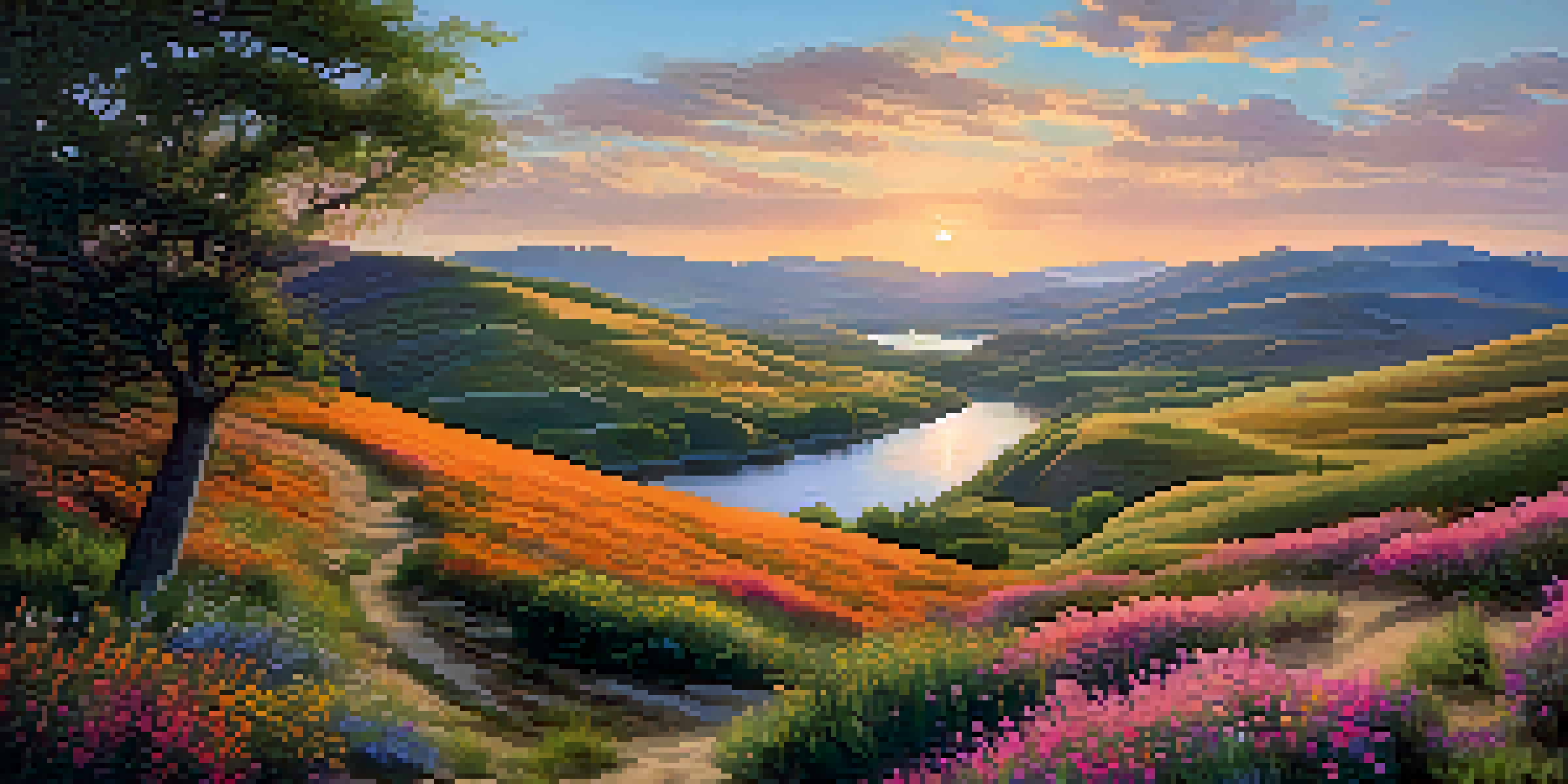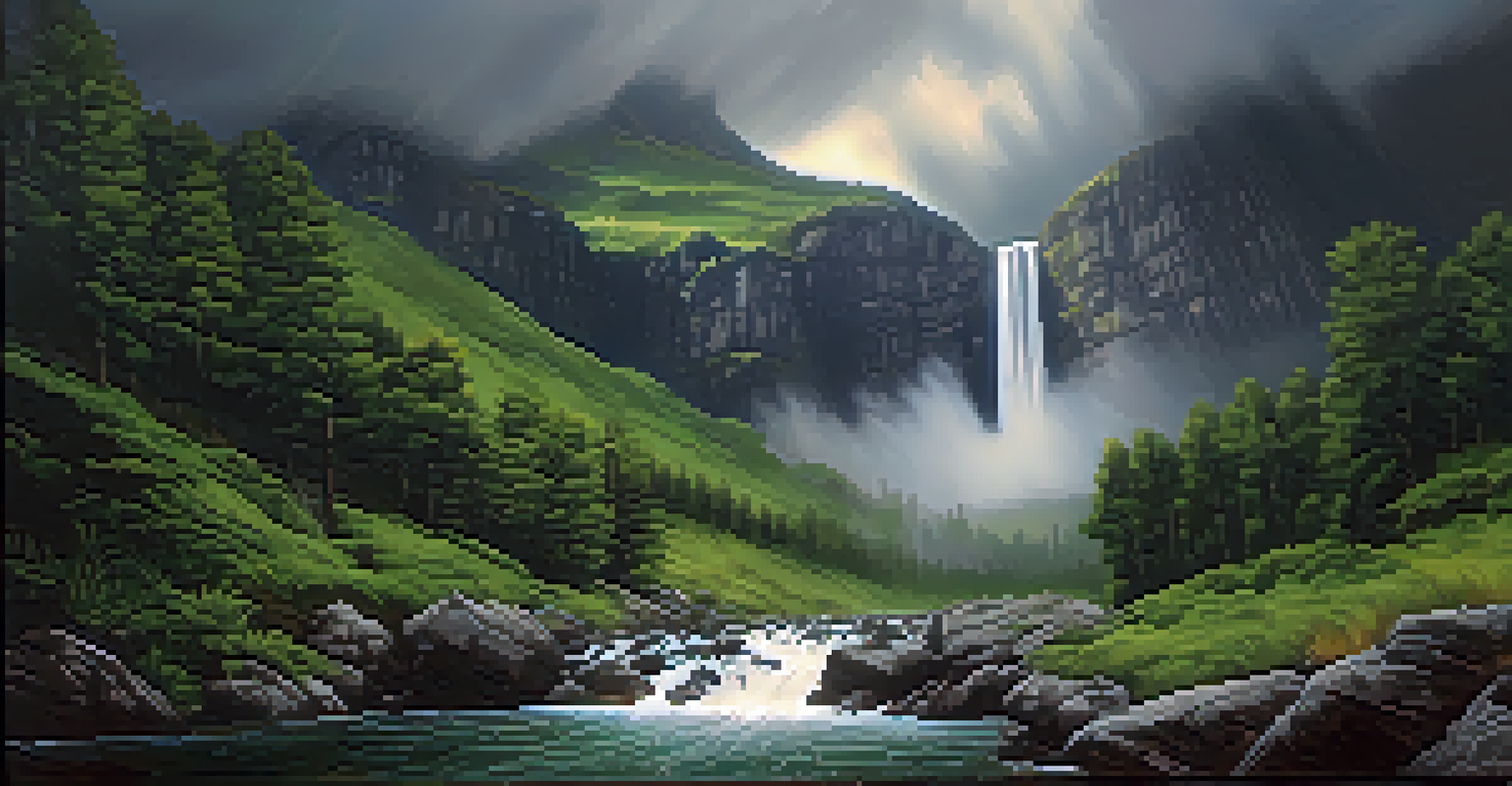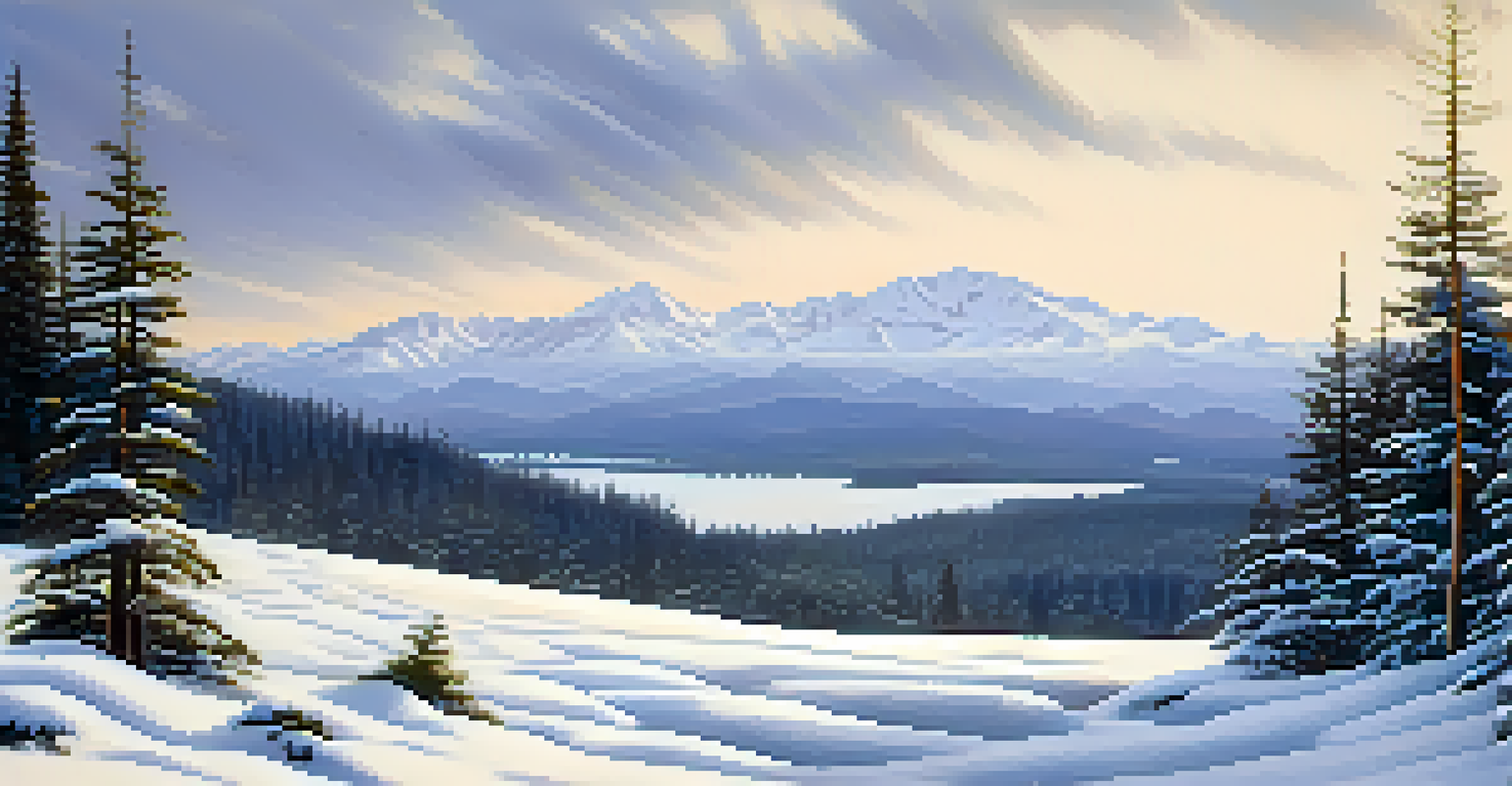Photography Tips for Capturing National Park Landscapes

Understand the Best Times for Landscape Photography
The golden hours—early morning and late afternoon—offer the best natural light for photography. During these times, the sun casts a warm, soft glow that enhances colors and textures in your landscape shots. Learning to plan your shoots around these hours can dramatically improve the quality of your images.
In every walk with nature one receives far more than he seeks.
Additionally, overcast days can provide a unique opportunity for capturing landscapes. The clouds diffuse harsh sunlight, reducing shadows and creating a more even lighting scenario. This is especially beneficial for photographing waterfalls or other elements where detail is crucial.
Remember to consider the seasonal changes as well. Each season brings its own palette of colors and moods to national parks, whether it’s the vibrant foliage in autumn or the stark beauty of winter snow. Capturing these variations adds depth to your portfolio.
Compose Your Shots with Care
Composition is the backbone of any great photograph. The rule of thirds is a helpful guideline; imagine dividing your frame into a 3x3 grid and placing key elements along these lines or at their intersections. This technique can create a more balanced and engaging image.

Leading lines are another powerful compositional tool. They draw the viewer's eye into the photograph, whether it's a winding river, a trail, or a row of trees. Using natural lines effectively can lead your audience to the focal point of your landscape.
Best Times for Landscape Shots
Capturing images during golden hours and overcast days ensures optimal lighting and enhances the beauty of landscapes.
Don’t forget about framing! Use natural elements—like branches or rock formations—to frame your subject. This adds depth and context to your images, making the landscape feel even more immersive.
Experiment with Different Perspectives
Changing your perspective can turn an ordinary shot into something extraordinary. Instead of shooting from eye level, try getting low to the ground or finding a higher vantage point. This can offer a fresh take on familiar landscapes.
Photography is the story I fail to put into words.
Consider the angle of your shot as well. A wide-angle lens can capture more of the scene and create a sense of grandeur, while a telephoto lens can isolate specific details, like mountain peaks or unique rock formations. Both approaches can tell different stories within the same landscape.
Don't shy away from experimenting with unusual compositions. Sometimes, an unconventional angle or a close-up shot of a specific element can provide a unique perspective that captivates viewers and adds variety to your work.
Utilize Filters for Enhanced Effects
Filters can be game-changers in landscape photography. A polarizing filter, for instance, can reduce glare and enhance colors, especially in skies and water. This tool helps to bring out the vivid hues that often get washed out in bright sunlight.
Neutral density (ND) filters are also beneficial when you want to capture long exposure shots, like silky waterfalls or soft, flowing clouds. By limiting the amount of light entering the lens, you can achieve stunning effects that showcase movement.
Composition Techniques Matter
Effective use of composition techniques like the rule of thirds and leading lines can significantly elevate the visual impact of your photographs.
Experimenting with filters allows you to explore different creative avenues. It’s a chance to develop your unique style and can elevate your photography to a professional level.
Master the Art of Depth of Field
Depth of field (DoF) refers to the range of distance that appears acceptably sharp in your photo. A shallow DoF can isolate your subject, making it pop against a beautifully blurred background. This technique is perfect for showcasing foreground elements in vast landscapes.
Conversely, a deep depth of field ensures that both the foreground and background are in sharp focus. This is particularly useful when capturing vast landscapes where you want every detail—from the flowers at your feet to the mountains in the distance—to be clear.
Understanding how to manipulate DoF will help you convey the mood and message of your photos. It’s a powerful tool in storytelling through photography.
Incorporate Weather Conditions into Your Shots
Weather plays a pivotal role in landscape photography. Don’t shy away from shooting in less-than-ideal conditions, like rain or fog. These elements can add mood and drama to your images, creating a unique atmosphere that sunny days may not capture.
For example, misty mornings can lend an ethereal quality to your landscapes, while dramatic storm clouds can add intensity to a mountain scene. Embracing these conditions can help you create striking and memorable photographs.
Embrace Weather's Influence
Shooting in diverse weather conditions can add mood and drama to your landscape photography, creating more compelling images.
Always be prepared for changing weather. Carrying a weather-resistant camera bag and protective gear for your equipment ensures that you can capture those unexpected, breathtaking moments.
Practice Patience and Mindfulness
Great photography often requires patience. Taking the time to observe your surroundings can help you discover hidden gems and unique compositions that you might have otherwise overlooked. Slow down, breathe, and really take in the beauty around you.
Mindfulness can also help you connect more deeply with the landscape. By being present in the moment, you'll find inspiration in the details—the way light dances over a rock or how shadows play across a valley.

This approach not only enhances your photography but also enriches your overall experience in nature. The more you invest in the moment, the more rewarding your photography journey will be.
Edit Your Photos for the Best Results
Editing is an essential step in the photography process. It can turn a good photo into a great one by enhancing colors, correcting exposure, and sharpening details. Programs like Lightroom and Photoshop offer powerful tools to help you refine your images.
Don’t be afraid to adjust the contrast and saturation to bring out the natural beauty of the landscape. However, it’s important to maintain a balance, ensuring that your edits don’t stray too far from reality.
Remember, the goal is to enhance your vision, not change the essence of what you captured. A thoughtful edit can highlight the beauty of national parks and make your photographs stand out.